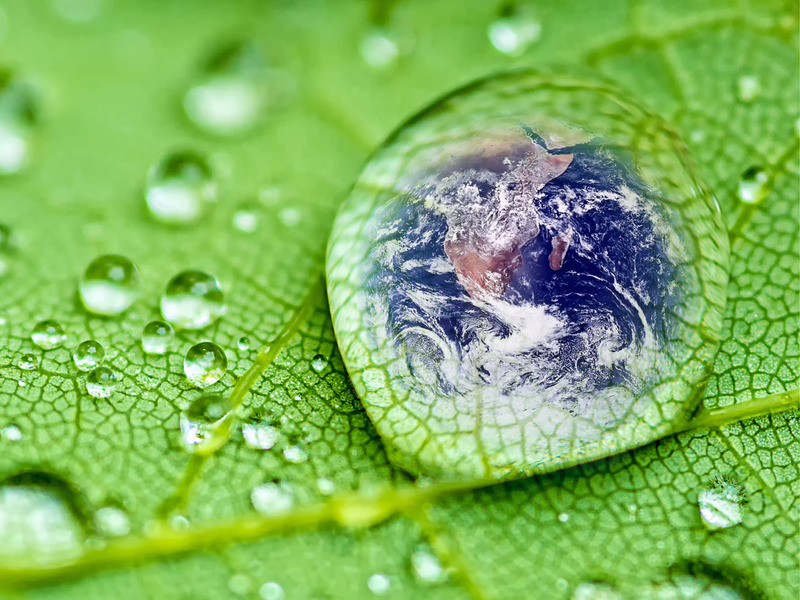A new year means new resolutions, but instead of the resolutions fizzling out after a few months, consider what steps you can make toward a more sustainable world. You and your family can apply these suitability methods to your home, and for your business, Kurita America as your water experts take state-of-the-art technology to deliver optimal results and overall lower cost of ownership.
Whether it be at home or work, conversing water has become a main focus due to the rise in water-related natural disasters, increased water scarcity, and water expenses. A little goes a long way when it comes to saving. A household and a business can run similarly, and the education can be transferred from one to another by water audits, routine maintenance that may lead to fixing and upgrading equipment, and water reuse and irrigation.
Audits
At the beginning of any process, an audit should be done to understand how a facility receives, pays for, and uses water. This first step will determine how you can save water. A water footprint looks at water use of “an individual, business, community, city, or country” with direct water and indirect water use (Pettit). In the case of business water use, the water footprint includes water used for heating, cooling, processing, and storing produced materials. Direct water is usually what we use in home while indirect water is the products that we use daily that are manufactured or produced and services that are provided.
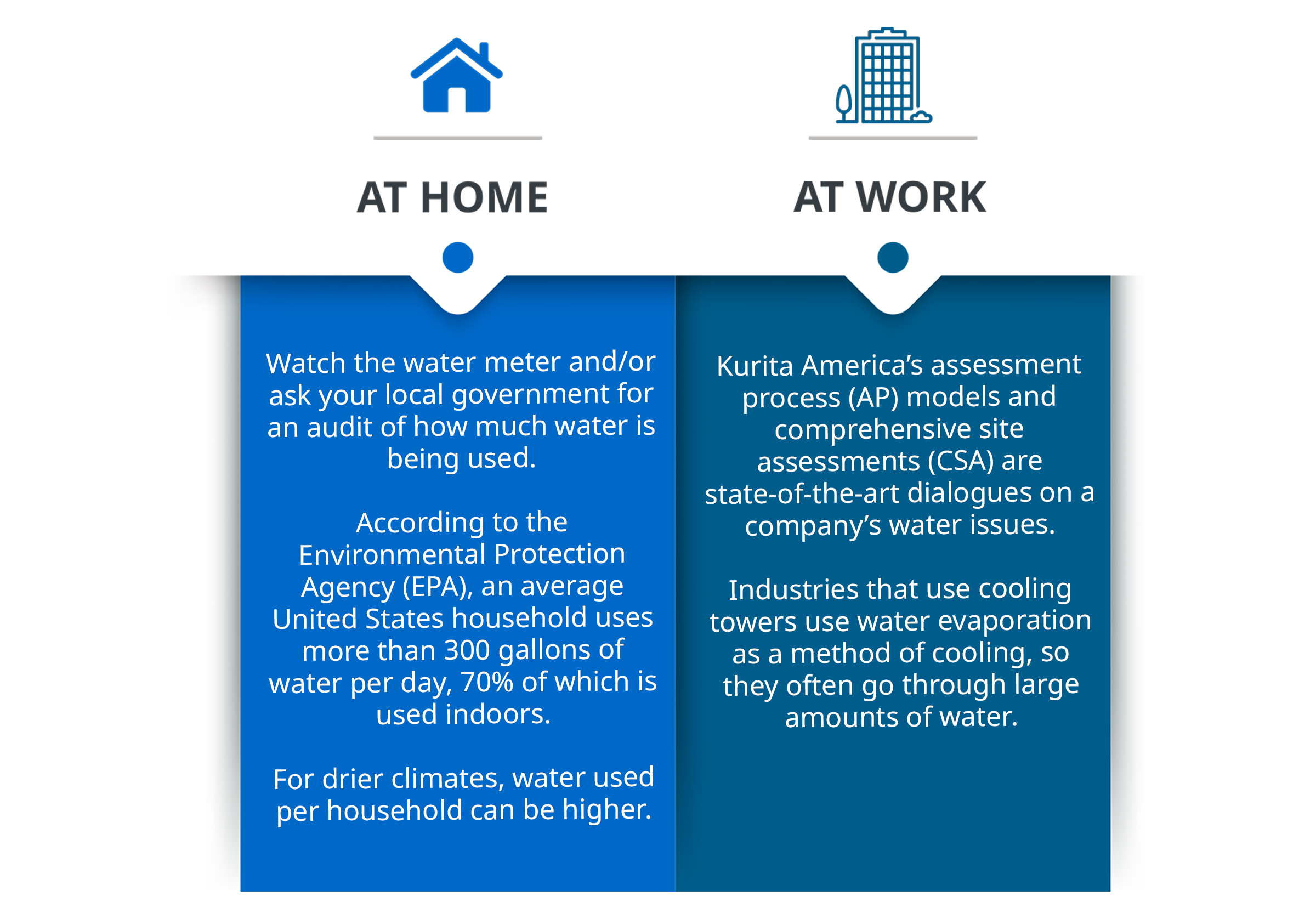
Whatever the water audit says will ultimately affect what the next steps are in the water-saving process and will hopefully also save costs.
Routine Maintenance
To save costs, routine maintenance should be performed regularly, but often it comes as a secondary thought when something needs to be fixed or upgraded. While not always the favorite task, it is something that will help you in the long run because early detection will save time, money, and patience.
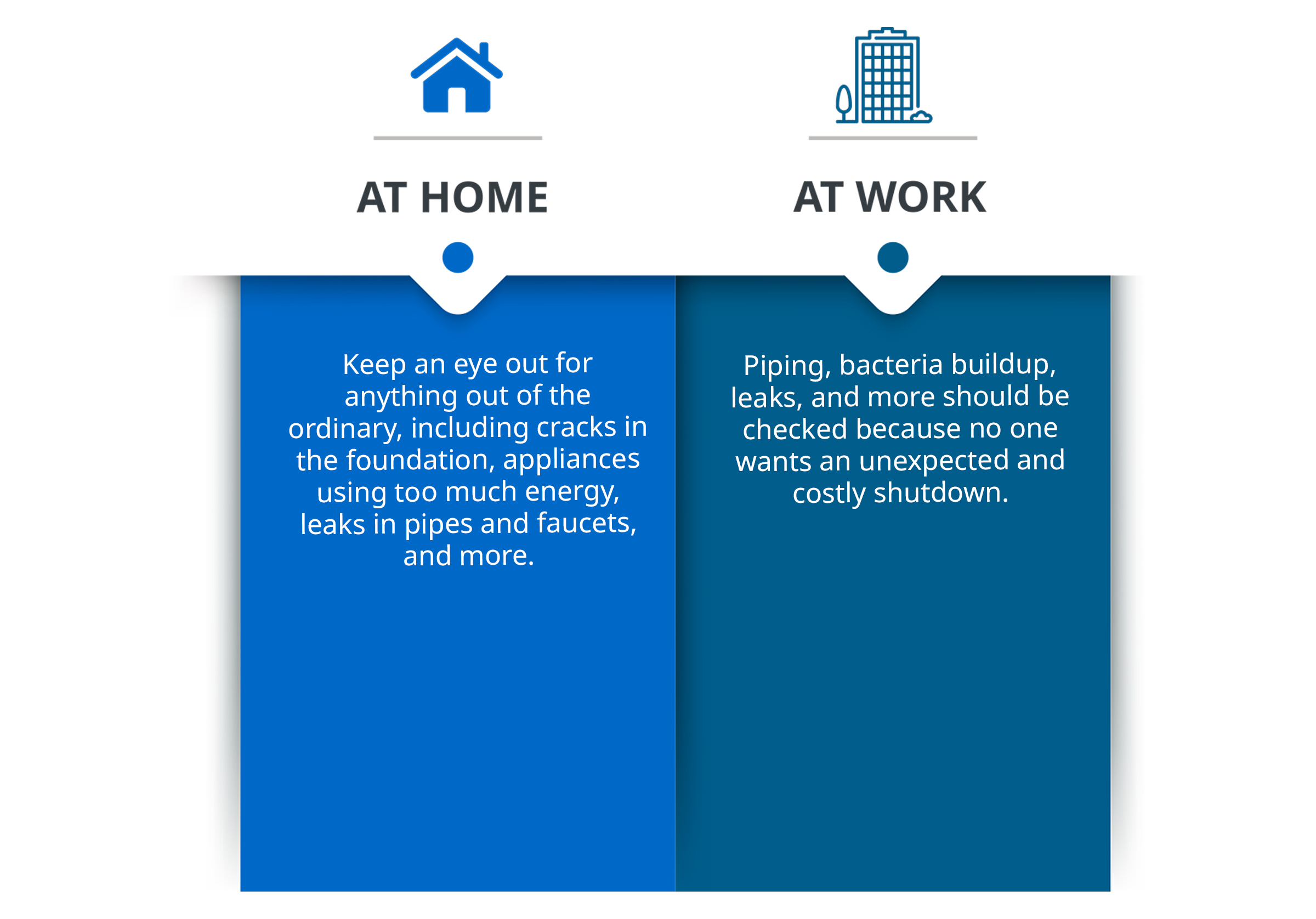
Leaks
More often than not, leaks will be one of the biggest issues.
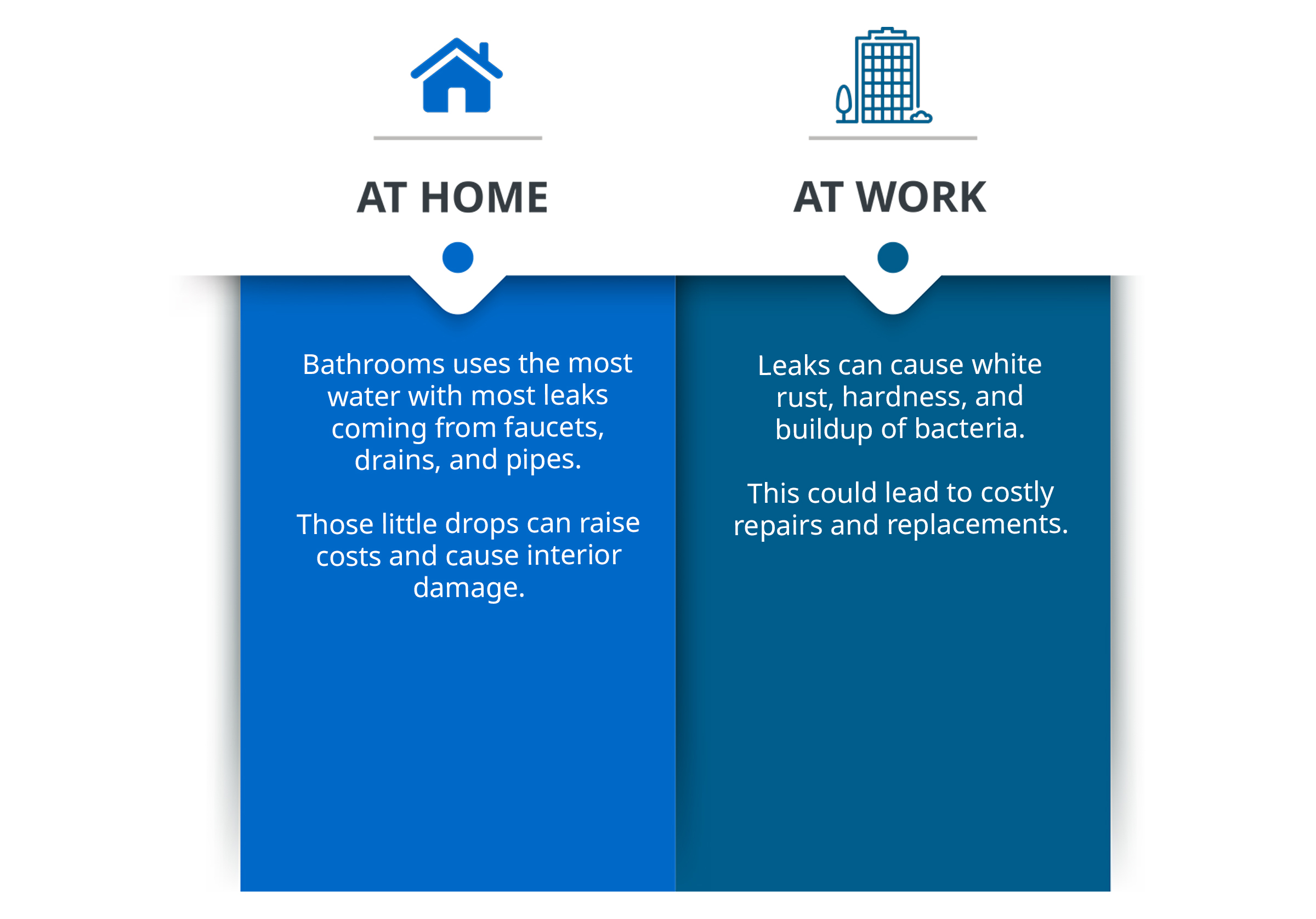
Update Equipment
If possible, then equipment should be updated systematically.
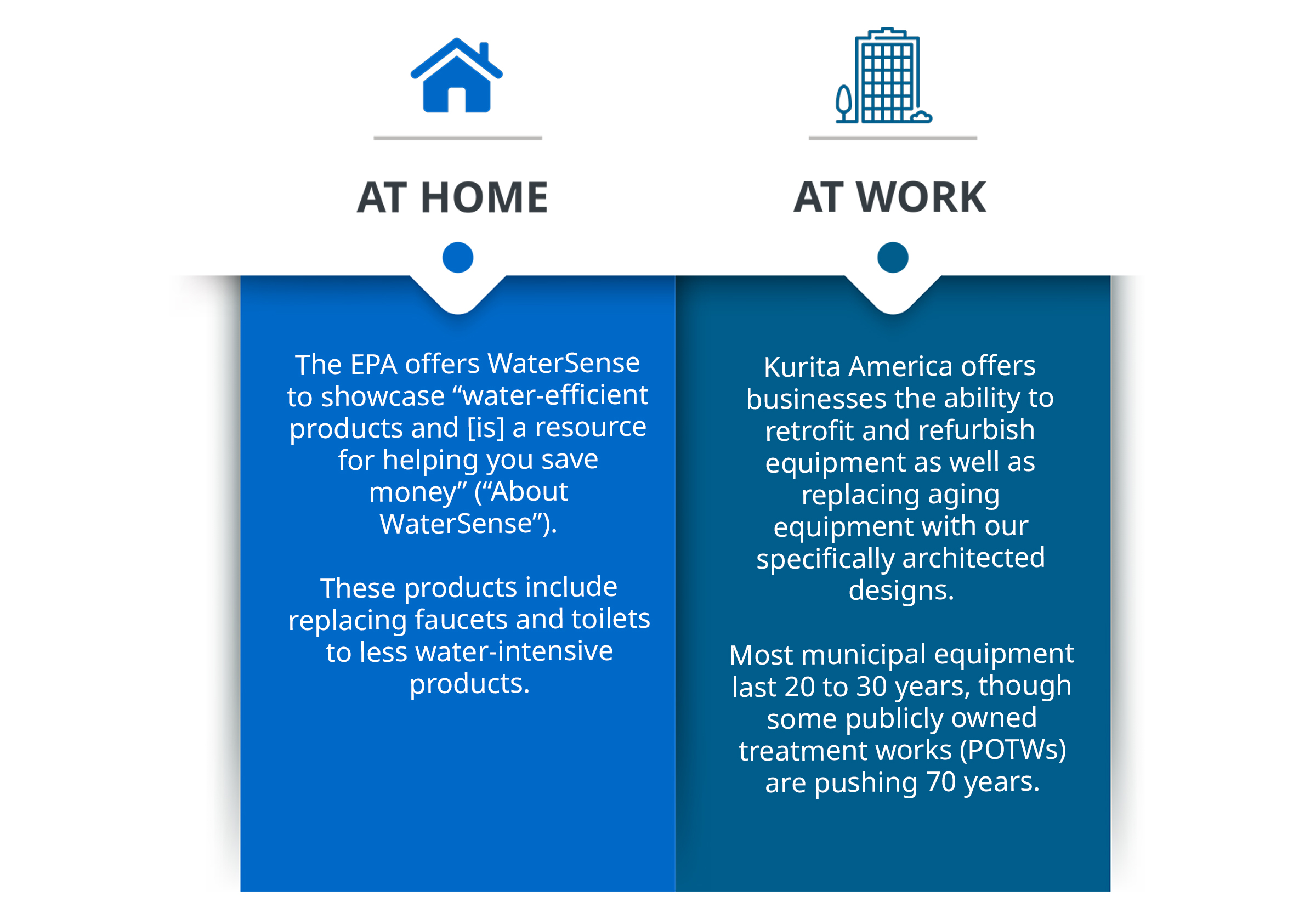
Upgraded and fixed equipment in a house or business will help with water-related issues.
Water Reuse
To combat water scarcity, water reuse— also known as water recycling or water reclamation— has become popular. Large businesses are focusing on water positivity that mirrors the United Nations’ net zero emission goals. Reused water is wastewater that has been previously used, such as from brushing teeth or washing fruits and vegetables. In the United States, water that comes from a municipal drinking water system must meet a regulated standard of quality, which is called potable water. For non-potable water, this water has not been treated enough to be safe for a human to drink, but the non-potable water can be used. At home and in businesses, reusing once potable water and non-potable water for secondary tasks, such as irrigation, will save water and money.
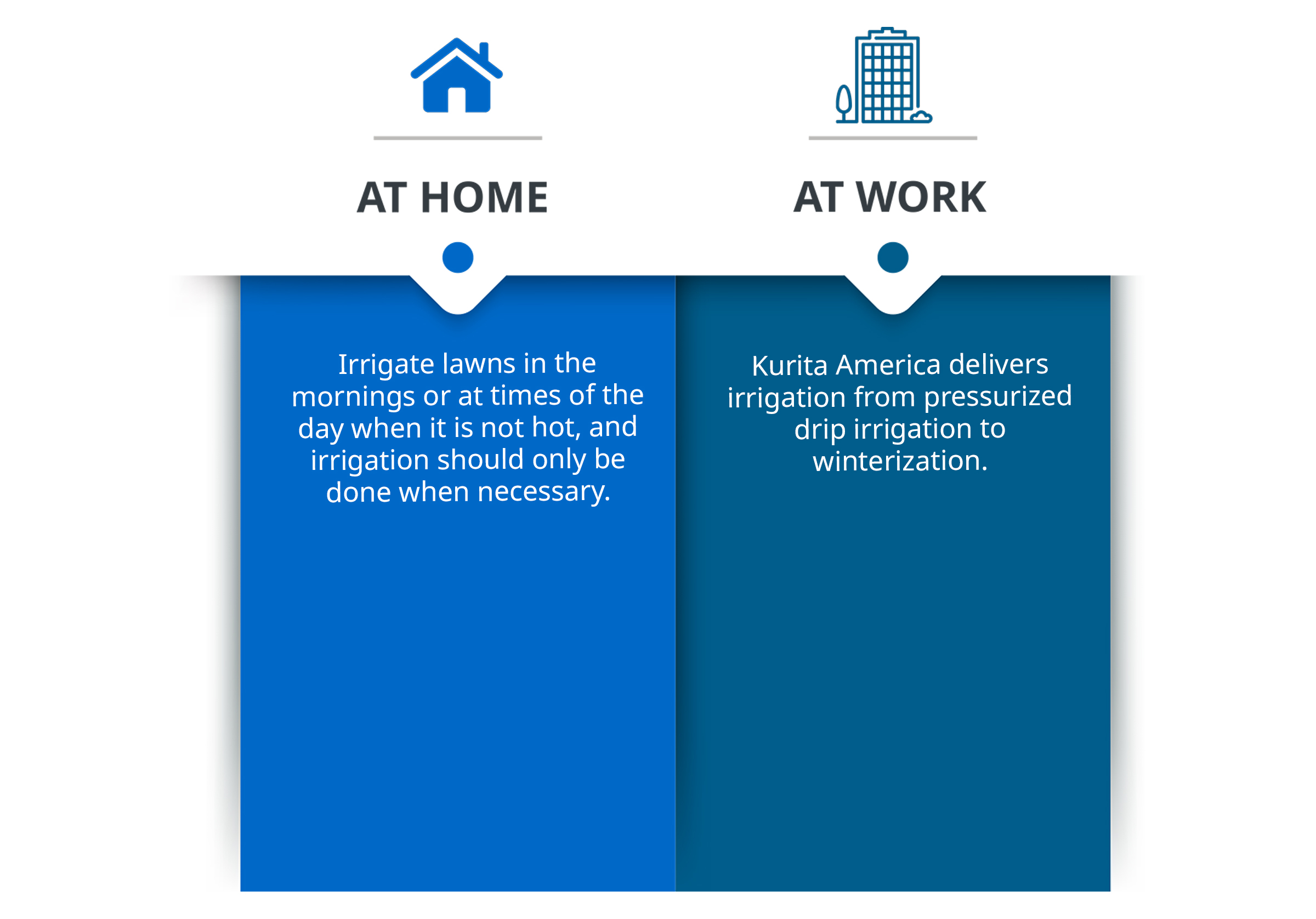
Water reuse is just the beginning of what can be done and just the beginning of what needs to be done.
Conclusion
New year and new resolutions for your work and home can lead to huge savings for you and the environment. At home, take water audits; perform routine maintenance, fix leaks, and consider upgrading equipment; and utilize water reuse and irrigation into an everyday life. If you are looking for a short- or long-term partnership at work that can deliver optimal results and overall lower cost of ownership while conserving natural resources for a more sustainable world, then contact Kurita America today.
References:
WaterSense (n.d.) EPA. https://www.epa.gov/watersense/about-watersense
Pettit, Marisa. (2018, March.) Save Water: Reduce Your Water Footprint. Reset. https://en.reset.org/save-water-reduce-your-water-footprint/

